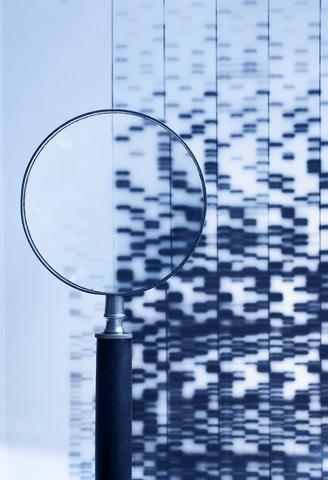Genes a Classical View

You inherited a bad gene...
Ready...
My mother used to say that any of her children’s poor behavior was a result of a bad gene from the family. Do genes determine behavior?
What do you think?
Questions that we will answer in this lesson.
What is in a gene? Why do some people develop a genetic disorder? Why do I look the way I do?
We will understand and explain the relationship between genes and chromosomes and other topics in genetics.
Many of the principles will repeat throughout the unit. It will help you remember the fundamental structures found in our DNA.
First, review the vocabulary for the lesson.
Vocabulary Match
Open the vocabulary list in a different tab (rotate the clockwise for better viewing).Complete the word match.
Gregor Mendel
The mechanisms that govern inheritence were first addressed by a monk, Gregor Mendel.
Mendel's work with peas set the foundation of much of what we now call classic genetics.
What are genes?
The following video will help you answer the question.
Set...
So, what is a gene? Write it down in your lab book. I'll collect it at the end of the lesson.
We need to look a little deeper.
To understand genes, we need to address what they do.
There is a video quiz. Remember to take notes.
We will also have a class discussion regarding chimpanzees and humans after the video.
Go...
With your lab partner, take five minutes to discuss the following questions:
-
Do humans and chimpanzees share DNA?
-
Is it possible to create a humanzee (Chimpun)?
-
In the first video, what did they mean by "we share 98.5% with chimpanzees and 99.5% with other humans?" That doesn’t seem like a big difference.
-
How do you think that DNA identification works?
-
What color rose would result from breeding a red rose with a white rose?
-
What are the genetic arguments for NOT having children with close relatives?
Take notes during the class debriefing. You will have a write-up for your reflection journal for homework.
For homework:
-
In your reflection notebook, summarize Mendel's experiment.
-
Outline your discussion notes and questions in your reflection notebook. The discussion notes will follow the standard reflection format.
-
Post your notes to the Lesson group form (Understanding Genetics). Remember, preface your notes with your group id.
-
Review Heredity, Genes, and DNA for tomorrow.
Finished Early
Here is an additional advanced video. It addresses with probabily, segregation, assortment, and more.
For 20 points credit:
Design an experiment that replicates Mendel's experiments with peas.
Run a study replicating Mendel's experiments with peas.
If you would like, we can germinate the pea seeds in class.
Create a poster, including pictures describing your experiment. We will display the poster in class, on our web page, or at the front office.